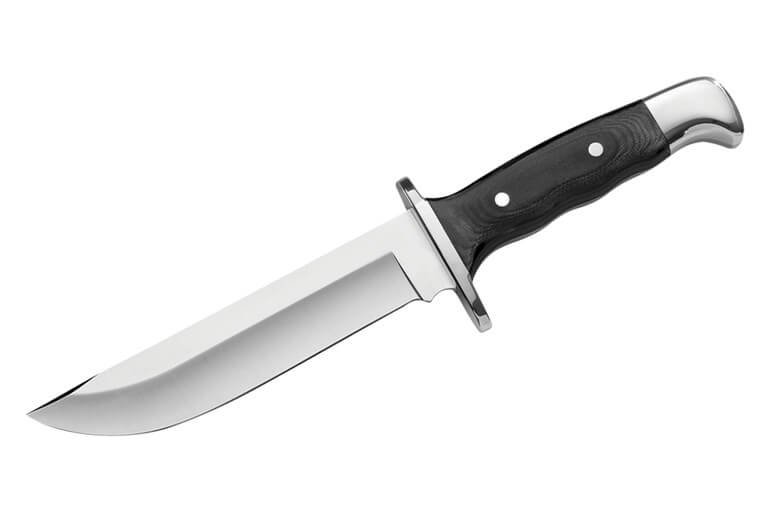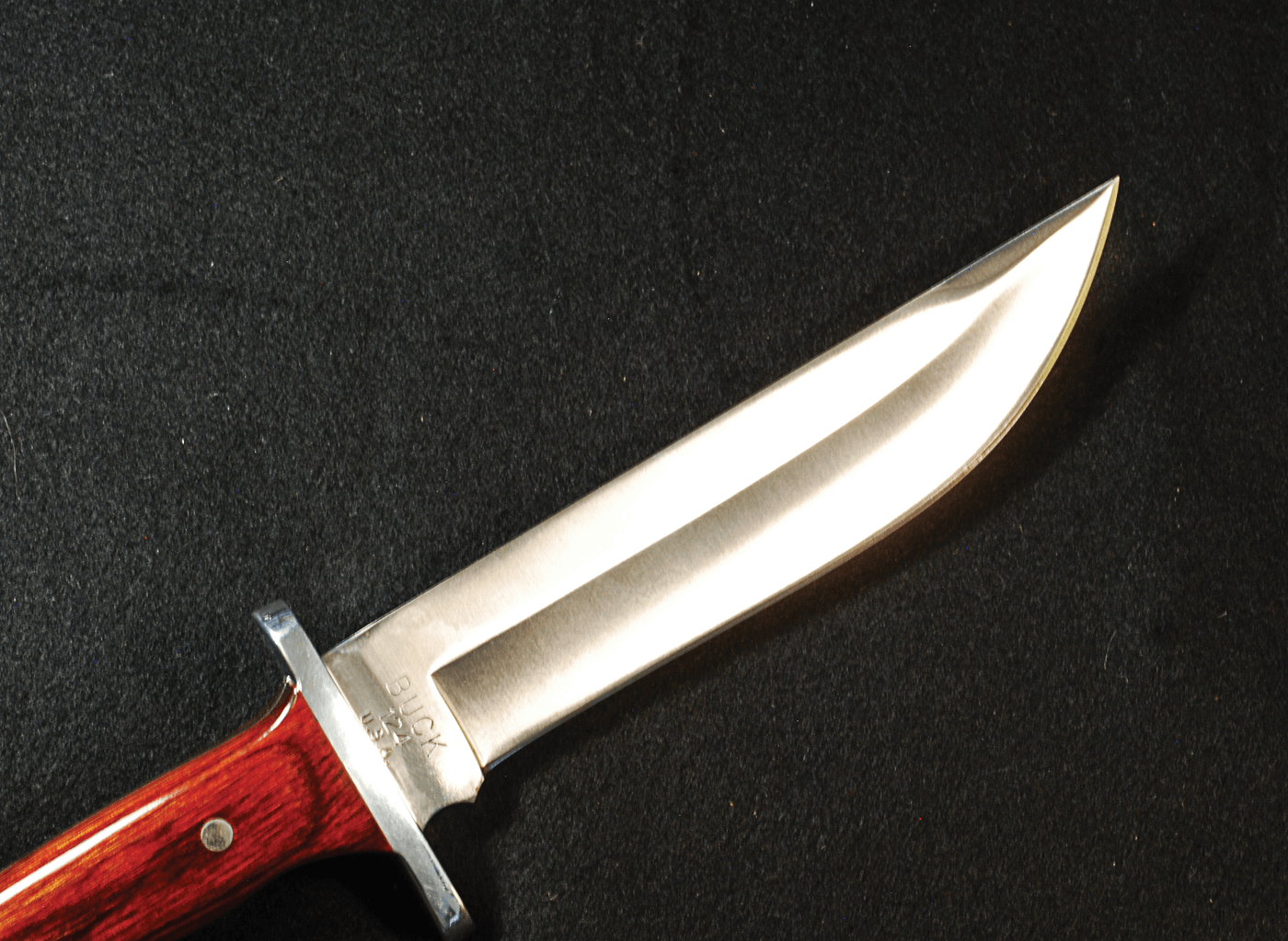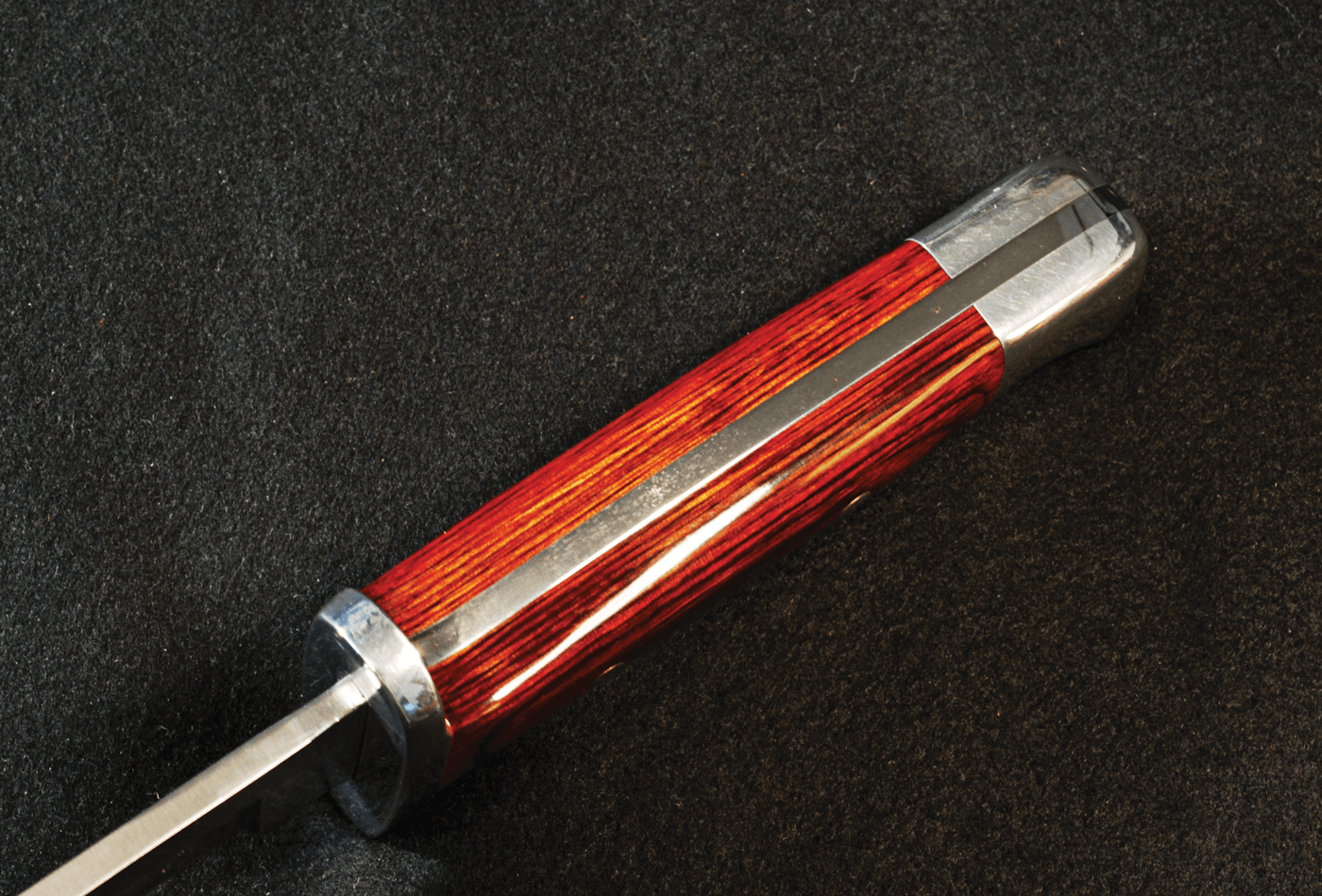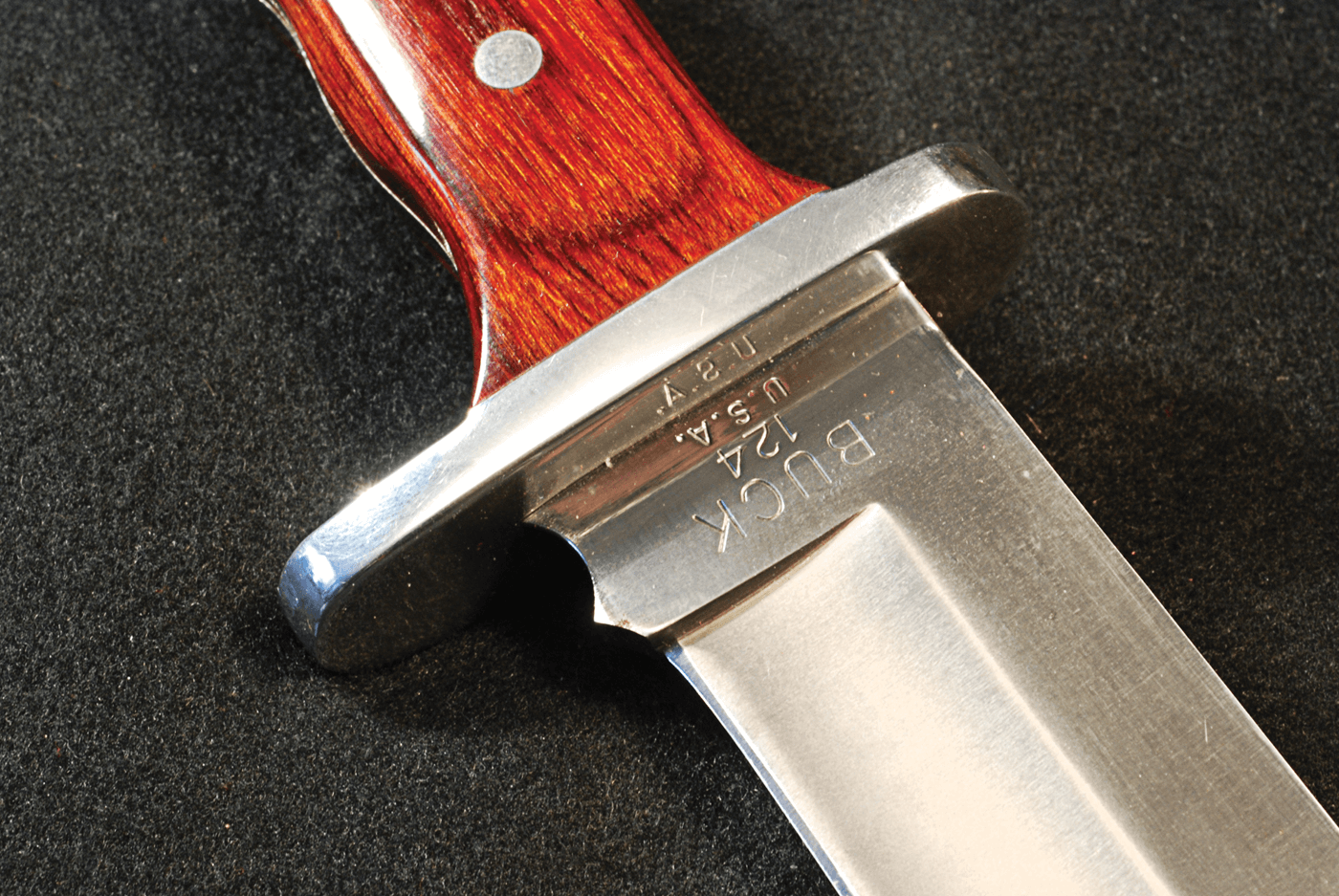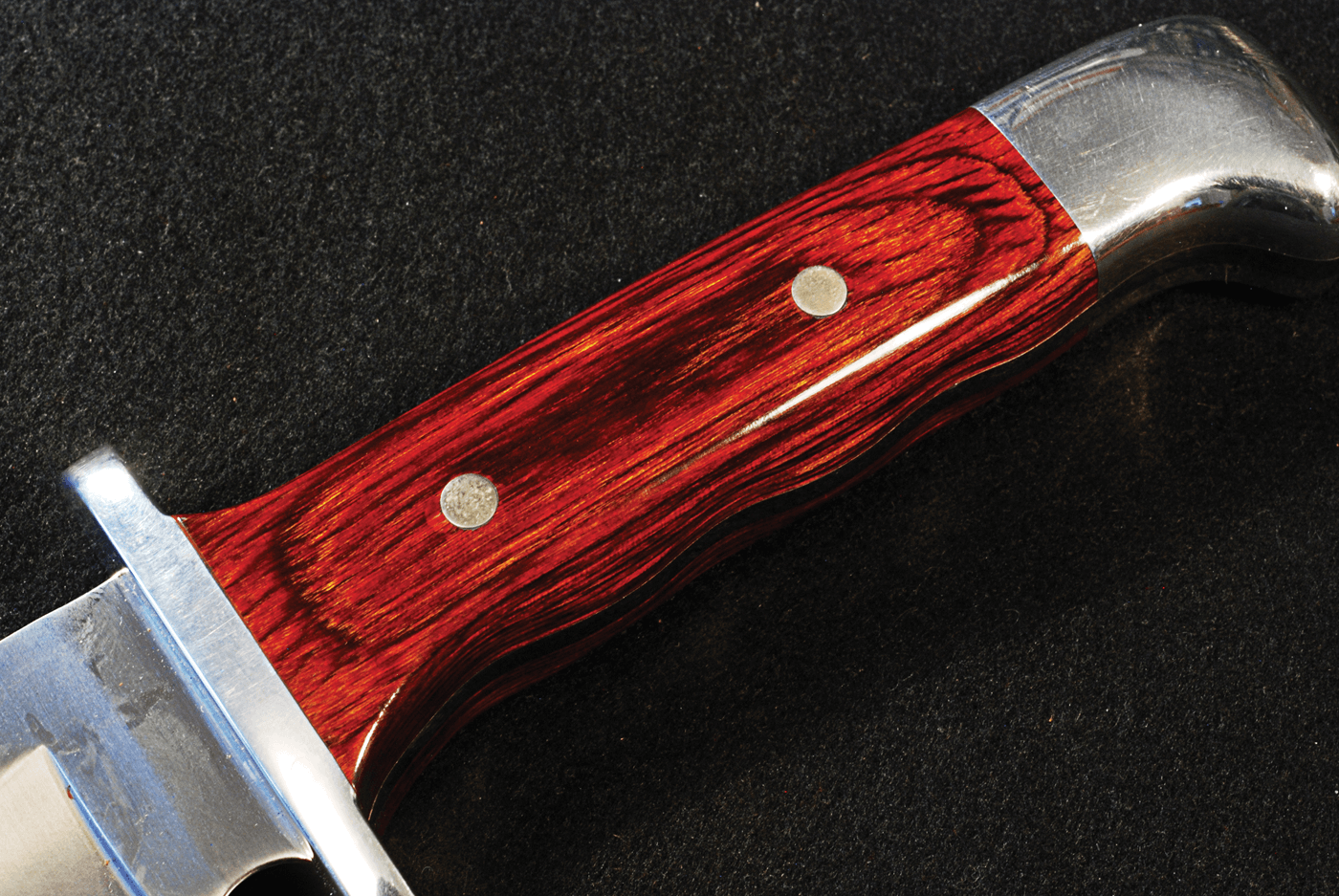The Buck Frontiersman is a knife for outside the city limits.
Life on the frontier in early America was a day-to-day survival test. Protection was largely an individual proposition, and procuring and processing food was a frequent task. In many ways, life in the 1800s was very similar to that faced in survival situations today.
When we look at the everyday tools of early settlers, it becomes obvious that a firearm, axe, and knife were almost always close at hand. Although small knives were certainly used, the knife carried was usually large and sturdy. That is precisely the type of knife chosen today for survival situations.
There is no shortage of large knives, which I regard as those having blades that measure at least half a foot in length. One of the large knives that is most appealing to me is the Buck 124 Frontiersman, and it would certainly have been an excellent choice for a frontiersman in early America. Although described as having a 6.25inch blade, my Buck Frontiersman has a blade that measures 6.75 inches from the front of the hand guard to the tip, and it almost seems larger. The large aluminum hand guard and generous grip contribute to the overall size of the knife as does the wide blade that measures 3/16-inch in thickness.
For most of its length, the blade is almost 1 3/8 inches wide so it is a very strong blade. It is full thickness for approximately one-half inch from the spine and then is hollow ground, as is the custom on most Buck knives. For many years, Buck has made blades of 420 HC stainless steel that is specially heat-treated to give a hardness of 58 on the Rockwell Hardness scale. Such blades have the hardness and corrosion resistance to make them suitable for many tasks while retaining sharpness. The knife also has a tang that extends the entire length of the handle and ends with a well-shaped aluminum butt cap. Shallow grooves are placed along the bottom edge of the grip. The overall length of the Buck Frontiersman is almost exactly one foot.

The Buck Frontiersman has been produced for many years and numerous variants have been available. As currently produced, the Frontiersman has black Micarta scales, but my knife was made approximately 25 years ago, and it has rosewood scales that are pinned in place. In the intervening years, the Frontiersman has been available with scales made of various woods, stag, and Micarta. Special editions have also been produced in limited runs at various times.
For a knife as large as the Frontiersman, a sturdy sheath is required and the one furnished with the knife meets that requirement. It is made of heavy black leather and has a durable retainer that circles the handle and snaps securely. The sheath is classic in design and, therefore, has no holes or other provision for attaching other gear.
The weight of the knife itself is 13.3 ounces, but with the large, comfortable handle enclosing a full tang that adds weight, the knife balances very well and does not feel “blade heavy” in the least. For such a large knife, it actually feels nimble in the hand.
Even though I prefer to do my chopping with an axe or hatchet, the Buck Frontiersman is up to that task as well as splitting wood. The blade is designed with a straight top edge and the bottom edge is straight for about four and one-half inches then sweeps up to a rather sharp point. The overall blade design is appropriate for many uses, and it is a substantial piece of survival equipment. However, when in remote areas, I also carry a small folding knife for more delicate tasks.
At $200, it represents a good value for someone seeking a high-quality, durable knife for heavy use. It is not a knife for cleaning your nails, but it sure is reassuring when you know that a lot may depend on the knife you are carrying.
Blade length: 6.75 inches
Blade thickness: 3/16-inch
Composition: 420 HC
Overall length; 12 inches
Weight: 13.3 ounces
Handle: Rosewood (now Micarta)
Sheath: Heavy black leather
Source:buckknives.com
MSRP: $200
About the author:
After a 32-year career as a chemistry professor at Illinois State University, Jim House has written extensively about shooting sports, which has resulted in the books “American Air Rifles,” “CO2 Pistols and Rifles,” “The Gun Digest Book of 22 Rimfire” and, with his wife Kathleen, “Customize the Ruger 10/22.” Jim is the Reloading Editor for “Gun World” and a Contributing Editor for other magazines.


